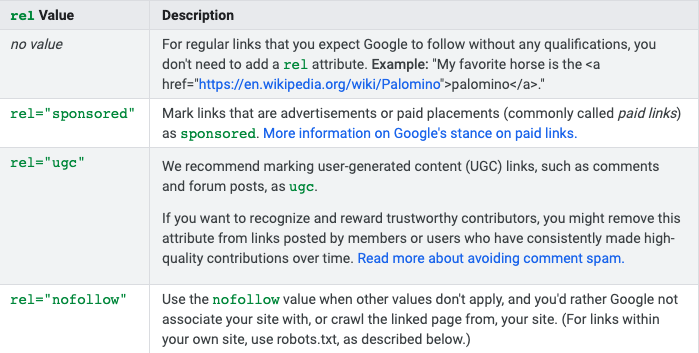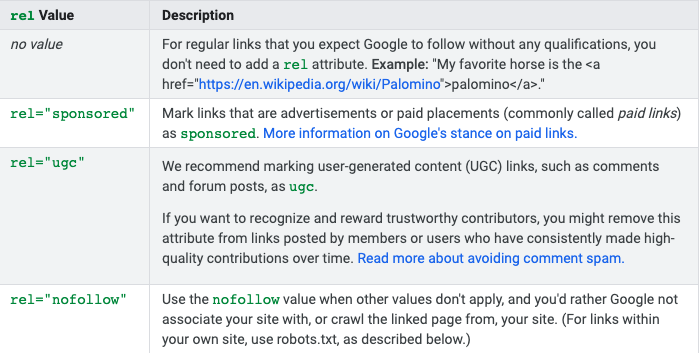Since the time Google introduced the PageRank in the search algorithm the importance to links was an obvious development. This also brought with itself the issue of spam. To combat this spam especially the comment spam, in 2005 Google introduced the “nofollow” attribute.
Its been 15 years now and Google announced on its webmaster blog that the web has evolved and it’s high time this attribute also evolves.

Google has announced two new link attributes by which webmasters can specify to Google the nature of concerned links. These are:
rel="sponsored":
This attribute to be used to identify links on your site that were created as part of advertisements, sponsorships or other compensation agreements.
rel="ugc":
UGC stands for User Generated Content, and the ugc attribute value is recommended for links within user generated content, such as comments and forum posts.
rel="nofollow":
This attribute to be used to for cases where you want to link to a page but don’t want to imply any type of endorsement, including passing along ranking credit to another page.
When "nofollow" was introduced in 2005, Google had not integrated its signals in the search algorithm. I mean to say the attribute was there but its purpose for indexing and crawling was not achieved. This will change soon.
Google mentioned :
All the link attributes, sponsored, ugc and nofollow, now will work as hints for us to incorporate for ranking purposes. For crawling and indexing purposes, nofollow will become a hint as of March 1, 2020. Those depending on nofollow solely to block a page from being indexed (which was never recommended) should use one of the much more robust mechanisms like:
The sponsored, ugc and nofollow attributes are basically to specify the nature of the links for which these will be used.
Google also added on the blog :
- Links contain valuable information that can help us improve search, such as how the words within links describe content they point at.
- Looking at all the links we encounter can also help us better understand unnatural linking patterns.
- By shifting to a hint model, we no longer lose this important information.
- The site owners get the option to indicate that some links shouldn’t be given the weight of a first-party endorsement.
From the SEO perspective the most important aspect to understand is:
The link attributes of “ugc” and “nofollow” will continue to be a further deterrent. In most cases, the move to a hint model won’t change the nature of how Google treats such links. Google will generally treat them as they did with nofollow before and not consider them for ranking purposes. But, Google will still continue to carefully assess how to use links within Search, just as they always have and as they have had to do for situations where no attributions were provided. But, for crawling and indexing purposes, nofollow will become a hint as of March 1, 2020.
Google has also answered the following FAQs on its blog:
- Do I need to change my existing nofollows?
- Can I use more than one rel value on a link?
- If I use nofollow for ads or sponsored links, do I need to change those?
- Do I still need to flag ad or sponsored links?
- What happens if I use the wrong attribute on a link?
- Why should I bother using any of these new attributes?
- Won’t changing to a “hint” approach encourage link spam in comments and UGC content?
- When do these attributes and changes go into effect?
you can find the answers on: https://webmasters.googleblog.com/2019/09/evolving-nofollow-new-ways-to-identify.html
September 11, 2019





